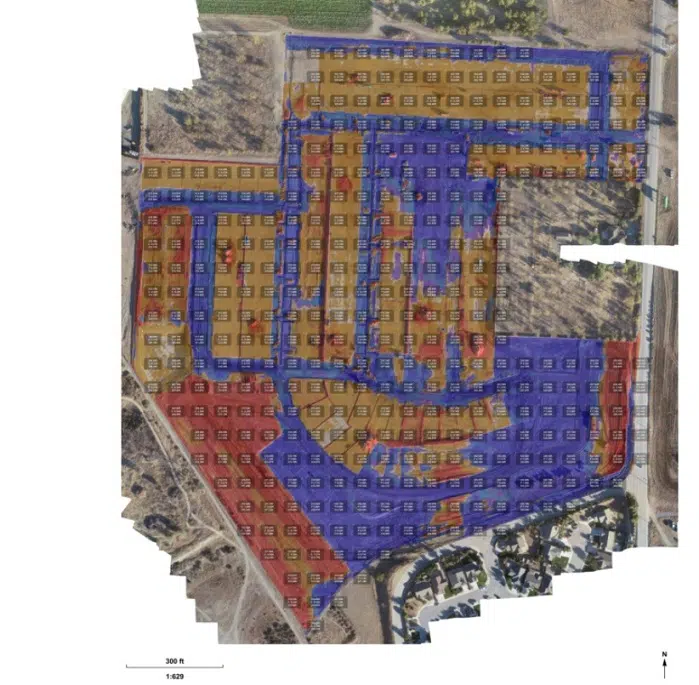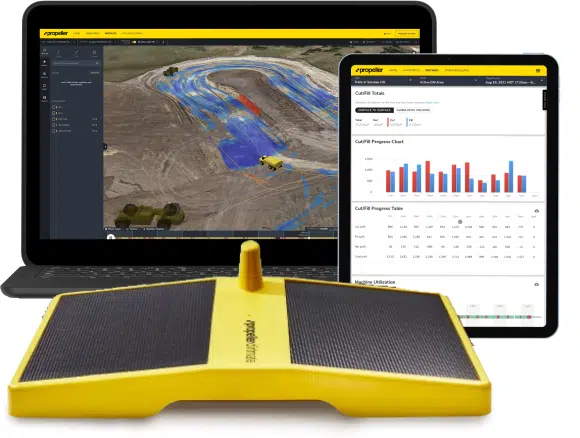Digital Transformation in the Construction and Earthworks Industries
Earthworks and civil construction are growing rapidly, with more clients, more bids, and more projects, some of which can be very complex. But worldwide, there’s still room in these industries for digital transformation and wider technology use.
At Propeller, we’ve observed how digital transformation is progressing more rapidly every day, as earthworks companies embrace new digital tools that positively impact their business operations. The digital technologies market in the construction sector is projected to increase by $29 billion in the next five years.
Here, we’ll examine what’s behind the digital transformation in construction and earthworks and why it’s so important to the growth of the industry.
Why has construction been slower to adopt technology?
Civil construction and earthworks professions have had reasons to be wary of technology, which has led to slower adoption. Some of the contributing factors have included:
- Feeling overwhelmed due to the wide variety of tools available
- Waiting for performance to catch up with worksite requirements
- A steep learning curve
- An unclear ROI
Construction is a very “physical” industry with many stakeholders for each project. Introducing changes you’re unsure about can lead to injury or project delays. With a slim margin for error, site work professionals needed time to build trust with an alternative approach to their work that included more technology.

Turning the technology tide
Despite some setbacks in 2020 that still resonate today—like supply chain issues and a growing labor gap—the construction industry has emerged from the global pandemic stronger than before. According to research from Deloitte and PwC, that growth will only continue.
As new challenges arise and old ones persist, contractors must improve efficiency wherever possible to effectively manage their work.
Supply chain disruption, sourcing challenges, and a widespread labor shortage are just a few of the challenges that technology can help address. Drones, wearables, artificial intelligence (AI), and site sensors all represent cutting-edge technologies that can improve your on-site operations and your ability to attract new employees.
What does digital transformation mean for the industry?
Digital transformation is about more than switching from analog processes to automated ones. True digital transformation means harnessing the power of technology to render site operations more productive, cost-effective, and safe. Digital technologies can be introduced at any level of an organization, from upper management to the field.
Key benefits include:
- Productivity: Higher productivity could create $1.6 trillion of additional value, according to McKinsey—and tech can help enable a 50-60% productivity boost. Digital tools optimize every stage of a project, from planning and design to project management and worksite operations.
- Safety: Construction sites have always been risky places to work, but tech can help mitigate that risk and protect workers. For example, drones can fly over dangerous terrain and heavy equipment and survey the site while the pilot remains in a safe place.
- Accuracy: The transition to digital technology helps remove human error, preventing rework and enabling projects to finish on time and on budget. For example, drone surveying workflows like Propeller PPK are accurate to 1/10 foot.
- Collaboration: SaaS (software as a service), drone hardware, and other digital tools create a shared data environment and single source of truth, making it easier for subcontractors, suppliers, clients, and other stakeholders to stay informed about a project’s progress.

Flying on the leading edge
At Propeller, we feel useful technology must keep evolving as fast as our customer’s requirements do. We’re constantly striving to make your worksites more efficient, productive, and safe. Recently, we’ve released:
- DirtMate: DirtMate is a machine tracking tool that helps you fill in the gaps in your survey data and understand the Why behind your daily earthwork output, not just the What.
- Propeller PPK improvements: We’ve formed new drone partnerships and continued to release software updates with features our customers have asked for, including:
- Takeoff reporting
- Design-to-design and surface-to-design comparisons
- PDF overlay and multiple file type support
- Composite surveys
- Timelapse and fly-through
- AeroPoints: Last year, we released the next generation of AeroPoints, our GPS-enabled smart ground control points that deliver the same precision as traditional solutions, with less time and money involved.




